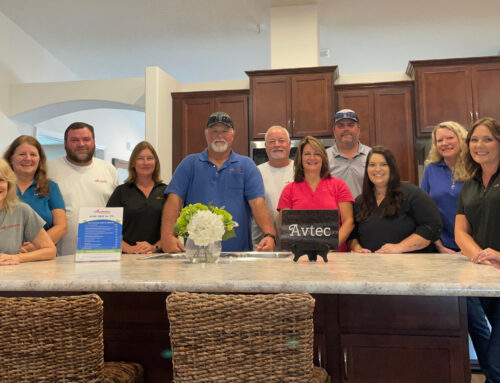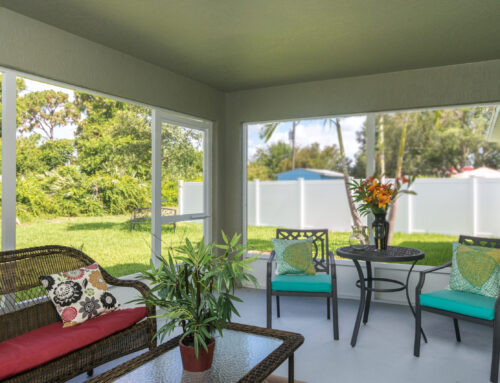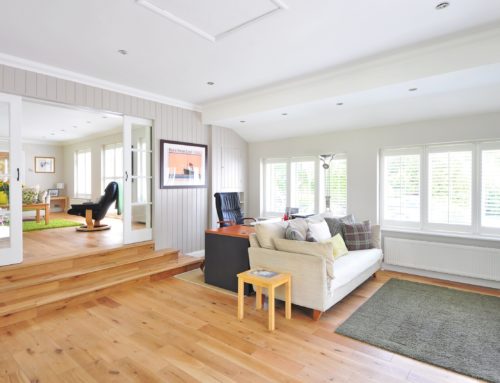LED Lighting for Energy Efficiency and True Light
At Avtec Homes, we understand what it takes to build a home that lasts. After all, we have been building homes for six generations. Today, homes must be energy-efficient as well as attractive and well built. Energy efficiency can save you money year after year, which will make any homeowner smile.
One area that homeowners often overlook when buying a home is lighting. That is until they move in.
If energy efficiency and ‘true light’ are what you seek, there is an optimal choice — LED lighting.
What Is LED Lighting?
You have probably heard of the term LED, but what does it mean?
LED stands for light-emitting diode. Compared to incandescent light bulbs, LED lights produce light up to 90 percent more efficiently. This type of lighting is also more versatile, lasts longer and offers brighter, more natural-looking light.
LEDs are incorporated into both bulbs and light fixtures. Based on their small size, LEDs provide a unique design opportunity. LED lighting is the way to go when you seek innovative design opportunities, greater efficiency and higher quality light.
When you choose energy-efficient LED lighting, you can light your home with the same amount of light as any other bulb, but for far less money. Lighting accounts for approximately 15 percent of electricity costs in the average home. So, the average household will save around $225 per year when using LED lighting.
A wide range of LED applications is available, ranging from outdoor lighting to task lighting, recessed fixtures to under-cabinet lighting. These products come in a range of colors and offer a range of features, including motion sensors and dimmers.
Why Is LED Lighting the Optimal Choice?
High-performance homes like and smart homes are trending and these trends are here to stay. Lighting plays a significant role when building with either (or both) of these concepts in mind.
There are two primary reasons to invest in LED lighting — energy efficiency and true light. However, the advantages range from optimal light distribution to unique design applications.
If your goal is to build and maintain an energy-efficient home, the lighting you choose will significantly impact your energy usage. Residential LEDs, particularly ENERGY STAR rated products, use at least 75 percent less energy yet last up to 30 times longer than incandescent bulbs. One of the main reasons for this is because they emit very little heat, compared to incandescent bulbs, which release 90 percent of their energy through heat.
LED lights are also more efficient for task lighting and recessed downlights, because they emit light in a specific direction, reducing the need for diffusers and reflectors, which can trap light.
LED lighting also yields what is known as “true light.” For example, Philips LEDs give off high-quality light thanks to a high Color Rendering Index (CRI). This means that this LED bulb illuminates objects to match their true and natural color. This technology helps you better simulate daylight for indoor environments. The goal here is to move away from purely artificial light, and benefiting from a broader and more continuous light spectrum.
Consider this: natural outdoor light has a CRI of 100. Philips LED products are always higher than 80. Although incandescent bulbs offer excellent CRI ratings, other variables, including higher efficiency, great longevity and overall quality, make LEDs the clear winner.
Based on the benefits discussed above and their versatility throughout a home, it’s no surprise that the future of LEDs is bright. By 2035, it’s estimated that LEDs will be present in around 84 percent of applications, leading to energy savings of 569 terawatt-hours a year, a figure that is equal to the annual output of over 92 one-gigawatt power plants. Even as the United States continues to seek alternatives to fossil fuels, saving that much energy will have an enormous and direct impact on carbon emissions.
Related: Going Green – How to Make Your Home Environmentally Friendly
Where LED Lighting Is Used in Residential Homes
As discussed, recessed or directional LED downlights are a great investment. They are highly versatile, offering design applications in hallways, bathrooms, kitchens and at-home office spaces. LEDs are great for lighting tight spaces in your kitchen, such as your countertop. Since LED lighting is durable, it is also often used for outdoor applications, like exterior decks, the garage or even as part of a home’s landscaping design.
Whether it be in the stairwell, family room or bathroom, the lighting in your home helps make it both comfortable and functional. LED is the best option when it comes to accent, task and decorative lighting.
There are many considerations when buying a home, including lighting. For some home buyers, the process can be overwhelming. This is part of the charm of move-in-ready homes — especially when the home is built to the highest standards, yet is still affordable. This is where AvtecHomes shines.
Ready to start designing your dream home complete with LED lighting? View our inventory homes to gain inspiration and get started.





